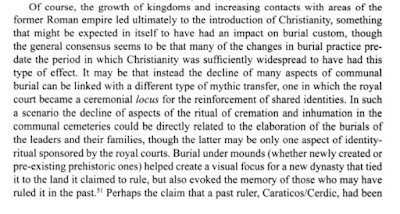I have been pondering the early dates for Cunedda/Ceawlin and Ceredig/Cerdic in light of the English tradition concerning the Gewissei. In my mind, precisely because these dates are so early, and all the Gewissei battles, when plotted out on the map, can be easily interpreted as defensive battles all along the periphery of the nucleus of Wessex, we might need to more seriously consider the possibility that the Gewissei were co-opted by the Saxons. In other words, Cunedda and his son Ceredig were fighting for the high king at Wroxeter against the Saxons, not in alliance with them. Only much later did the victorious Saxons absorb previous British heroes, making them part of their foundation myth.
Dovetailing nicely with this idea is my analysis of the group name Gewissei which, as it happens, does not denote federates of the Saxons (see https://mistshadows.blogspot.com/2018/06/a-startling-though-astonishingly-simple.html). It instead, quite transparently, was a Saxon attempt to render a tribal designation from the presumed meaning of Cerdic's own name.
If the Gewissei were, in fact, co-opted by the eventual conquerors, then Arthur's Badon might well be the Bath of the ASC, although, of course, that source's date of 577 is terribly wrong. Or if Arthur did not fight there himself, other Gewissei might well have.
Note that I am not alone in preferring this sentiment. The selections I am posting below come from renowned Anglo-Saxon historian Barbara Yorke (‘Anglo-Saxon Origin Legends’, in J. Barrow and A. Wareham, eds., Myth, Rulership, Church and Charters: Essays in Honour of Nicholas Brooks, 2008):




No comments:
Post a Comment
Note: Only a member of this blog may post a comment.